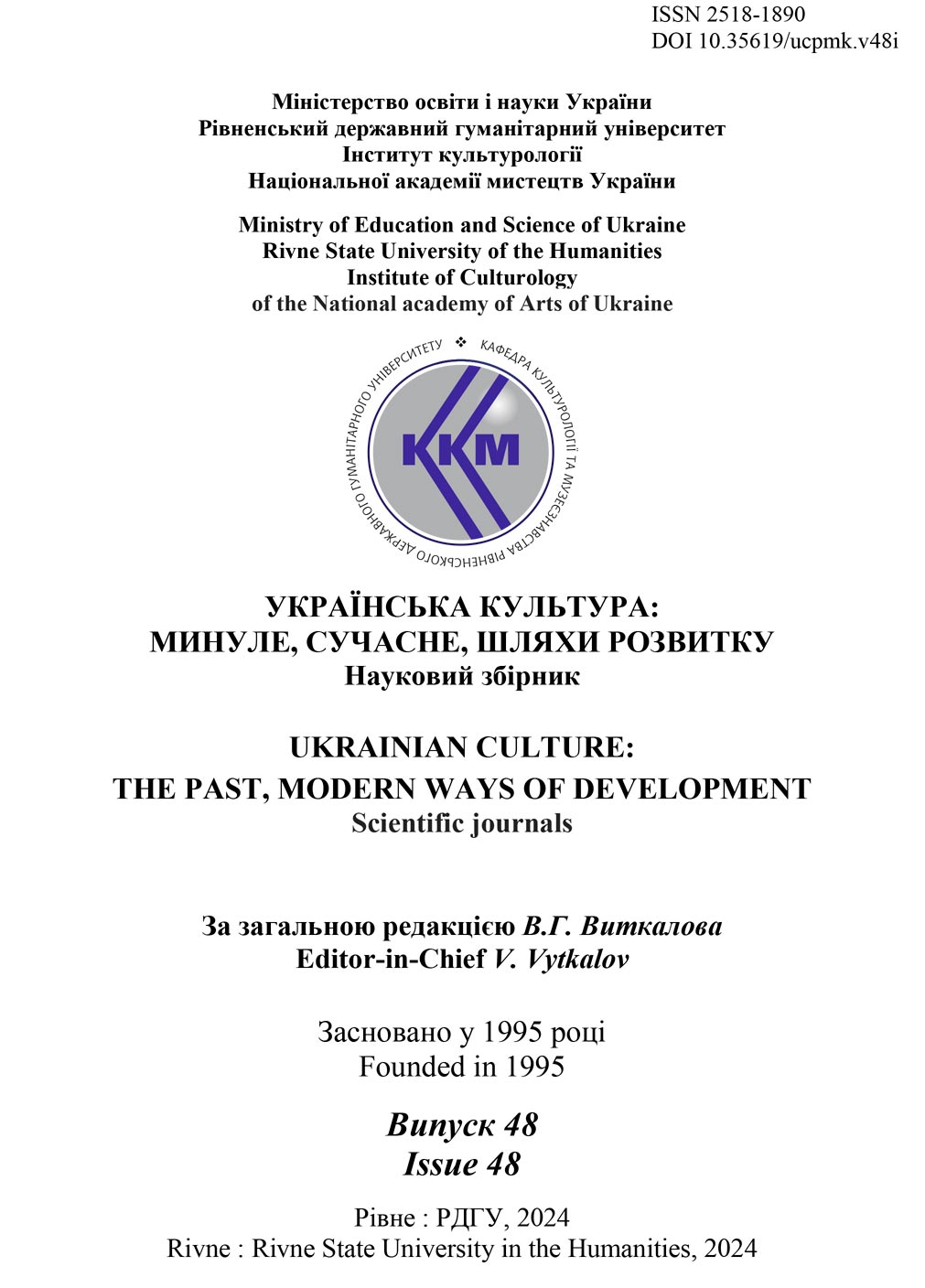SPIRITUAL-SYMBOLIC AND INTONATION-DRAMATURGICAL SPECIFICITY OF 68 CANTATES BY J. S. BACH
Abstract
The purpose of the work is to reveal the poetic-intonational and spiritual-symbolic features of J.S. Bach's 68 th cantata in the context of the general evolutionary paths of the German spiritual cantata in the context of the Lutheran liturgical-musical tradition. The methodological basis of the work is based on the intonation concept of music from the perspective of intonationstylistic, etymological analysis inherited from B. Asafyev and his followers, as well as on interdisciplinary and historicalcultural approaches. The latter allow us to reveal the spiritual-semantic and stylistic specificity of the 68 th cantata of J. S. Bach in the context of the spiritual instructions of the Lutheran liturgical practice of the XVII-XVIII centuries. The scientific novelty of the work is determined by the fact that for the first time it examines and analyzes in detail the figurative-symbolic and intonation-dramaturgical aspects of the 68 th cantata of J. S. Bach in the context of its relationship with the German Protestant liturgical spiritual and musical tradition. Conclusions. The poetics of the German spiritual cantata is determined by its contact with the liturgical practice of the Lutheran Church. This genre was directly related to the church sermon – the central spiritual and semantic core of the Lutheran service, and therefore was called «preaching music», «motet», «concert», «dialogue», generalized by the concept of «Hauptmusik» («Main music of the day»). Among the distinctive features of the spiritual cantata, the reliance on the Protestant chorale, on polyphonic forms traditional for the Baroque era, and on the significant role of the
instrumental beginning both in the overall ensemble and in the manner of writing stand out. Bach's 68 cantata, created in 1725 in Leipzig to the texts of Marianne von Ziegler, was assigned at the level of Hauptmusik («Main music») for the service of the second day of Pentecost, which in the Lutheran tradition is considered the birthday of the church and the result of the final formation spiritual instructions of a person's earthly existence, that is, his choice between faith and unbelief. The leading idea of the gospel reading, which sounds during the mass of this holiday, is also the structural basis of the text of the 68th cantata of JS Bach, which includes five parts. Choral sections (Nos. 1, 5) are key in it, which symbolically cover the time of the existence of the Lutheran Church. At the same time, the First part is based on a free arrangement of the ancient spiritual hymn of the XVII century, belonging to Salomo Liskovius and Gottfried Vopedius, while the fifth part is a grand double fugue, in which the original musical-rhetorical juxtaposition of the images of human faith and disbelief is ultimately represented by their contrapuntal combination, which symbolizes the harmony of the sacred space. The solo numbers of the 68 th cantata complement its choral sections, demonstrating the leading role of the instrumental beginning, indicative of Bach's vocal music, as evidenced by the virtuoso-coloratura nature of the vocal part of the soprano and bass arias, focused on the intonationrhetorical expression of images of joy, the triumph of the soul, approaching to God.


